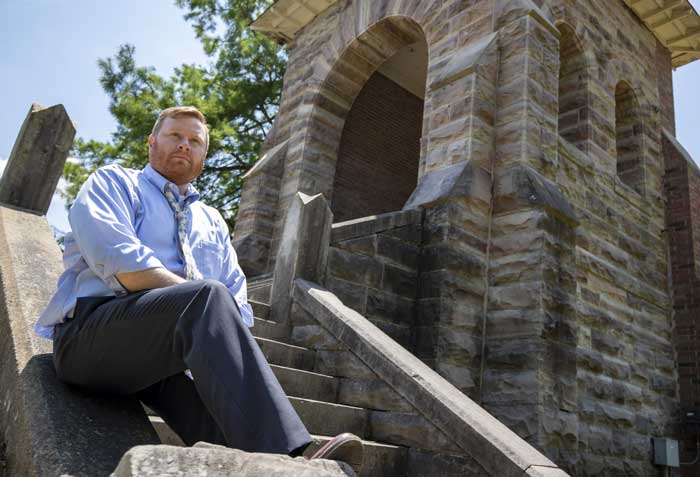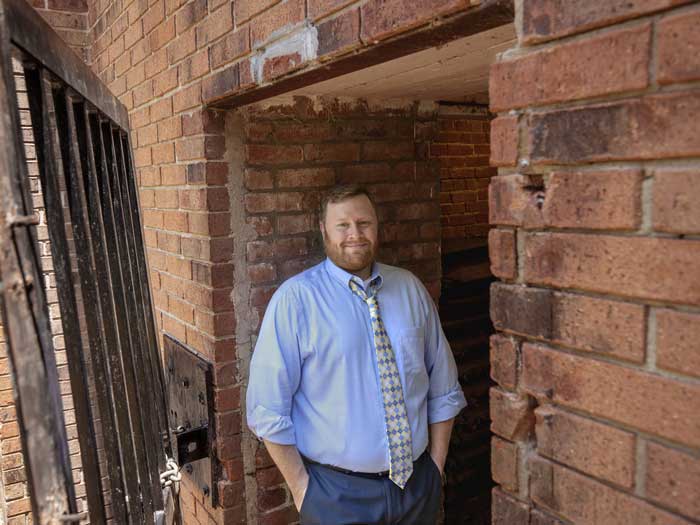UA Little Rock professor studies rural gangs in Mississippi
A University of Arkansas at Little Rock professor is shedding light on gangs in rural communities that have a connection to urban gangs in Chicago.
Dr. Timothy Brown, a sociologist and associate professor of criminal justice at UA Little Rock, is studying rural gang activity in a small town in the Mississippi Delta region with ties to gang affiliates in the Windy City.
Brown and Dr. Julie Baldwin, the project’s lead researcher and a criminology professor at Missouri State University, were asked to come to the town by a local sheriff, who is no longer in that position, to investigate rural gang life in the area and ways to combat the spread of gang life. The grant was funded by a federal grant from the Bureau of Justice Assistance, and Brown’s travel was sponsored by a grant from the UA Little Rock College of Social Sciences and Communication.
“We are trying to find ways to help prevent young kids from joining gangs and to help find best practices to lure kids out of gangs to alleviate gang problems,” Brown said. “There has not been much research on rural gangs. It’s much more focused on urban gangs.”
Brown has spent more than 90 hours interviewing 30 local jail inmates with connections to gangs. Most are men, and the average age is 26. Of those interviewed, 89 percent are black, 6 percent Hispanic, and 5 percent white. Many were jobless, underemployed, and under-educated. Their alleged crimes include homicide, aggravated assault, manslaughter, and shooting inside a dwelling. Some of the interviewees said they had been involved with gangs in Chicago before moving back to Mississippi with their families.
“It is a unique county. The way that the area got gangs is partially due to the great migration,” Brown said. “Since the county had a large blues and music scene, a lot of its residents migrated to Chicago. When parents and grandparents started moving back to Mississippi, they brought their children and grandchildren who had become affiliated with gangs. It wasn’t that the gangs had established franchises in small towns. The people moved back to this town, and they brought the gangs back with them.”
At the time of the interviews, Brown was worried that the inmates would not want to speak to an outsider, but he soon discovered that the men were eager to share their stories with someone who was willing to listen.
“I didn’t think they would talk to me, a 36-year-old white male,” Brown explained. “I was ‘The Man.’ I thought they would just say, ‘absolutely not,’ but we had very few who weren’t willing to talk. I think most people have not asked for their story. I was surprised by how willing they are to talk.”

The rise of gangs in the small Mississippi town began in the 1980s. According to Brown, the gangs started out as pseudo community organizations for young people to hang out, but they quickly progressed to criminal organizations.
“Early gangs in this county were sort of community organizations, and then they turned into drug gangs and now they are these chaos gangs,” Brown said. “There is not as much money in selling drugs, so now it is much more violence. You used to get status by being the best drug dealer and making the most money. Now you get status by showing bravado and being the most violent.”
While gangs in rural communities have distinct differences from their urban counterparts, Brown found that young people often joined gangs for the same reasons.
“They have most of the same reasons to join. They think they will have more protection in a gang,” Brown said. “They think there is no other way to make money or get status because there are no jobs. There is this sense of isolation that forces kids into gangs.”
Some of the young men interviewed also described joining gangs as an inevitable self-fulfilling prophecy that was fueled by the assumptions of community members.
“Oftentimes, many of these young men were assumed to be something they weren’t, and that often led them down that path,” Brown said. “There was one young gentleman who was approached by a school administrator, and the administrator just assumed him to be in a gang. He wasn’t in one, and he did later join the gang. He said that unfortunate assumption that one person made turned into a self-fulfilling prophecy.”
Brown and Baldwin are in the process of analyzing their research. They plan to submit papers to journals in public health, crime, and criminal justice. They have recommended that the community focus on strengthening ties between religious leaders and law enforcement to better combat the spread of gangs in the small town.
“The communities, oftentimes, feel like they are disconnected from the agents that are there to protect them or enforce the law. We proposed to have the clergy and religious leaders act as intermediaries,” Brown said.
As for the gang members themselves, Brown said the best time to help them is often the first time they land in jail.
“When it comes to the gang members themselves, one of the first times they become disillusioned with the gang is the first time they go into the county jail. They are told that they will be taken care of if they go to the county jail, but they are forgotten about,” Brown said. “If they lied to me about this, what else are they lying to me about? Then we tell them about all the potential agencies and resources that are in place to help them. If you can have an older member that has transitioned out of the gang, that would help build the rapport. Many of them wish that they would have had someone who told them to get out of the gang.”
